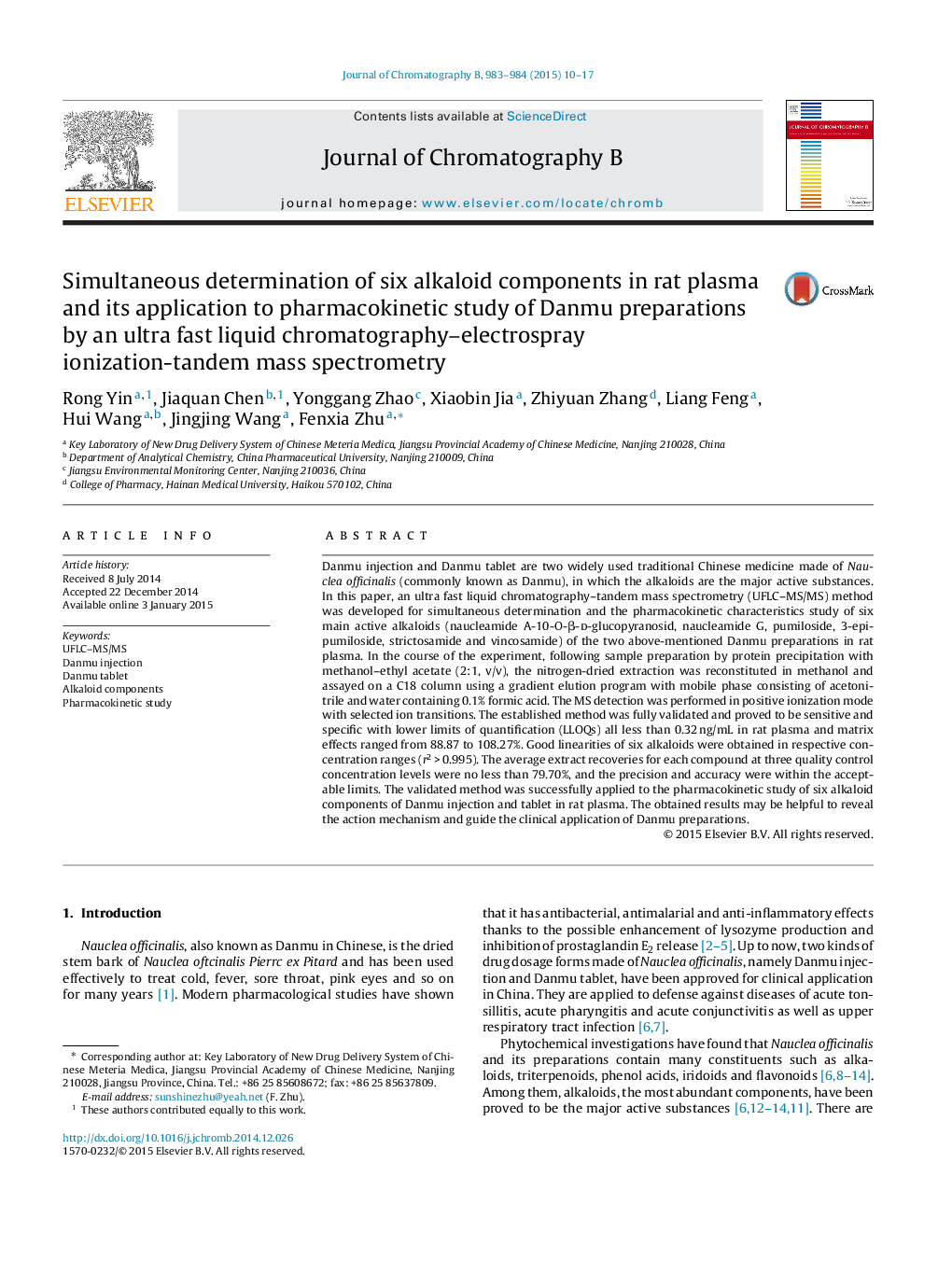| Article ID | Journal | Published Year | Pages | File Type |
|---|---|---|---|---|
| 1212339 | Journal of Chromatography B | 2015 | 8 Pages |
•Six components of Danmu preparations were simultaneous determined in rat plasma.•Methanol–ethyl acetate was used as the extraction solution achieving good recoveries.•The method was validated to be sensitive, precise, accurate and reliable.•Pharmacokinetic properties of the components in rats were described.
Danmu injection and Danmu tablet are two widely used traditional Chinese medicine made of Nauclea officinalis (commonly known as Danmu), in which the alkaloids are the major active substances. In this paper, an ultra fast liquid chromatography–tandem mass spectrometry (UFLC–MS/MS) method was developed for simultaneous determination and the pharmacokinetic characteristics study of six main active alkaloids (naucleamide A-10-O-β-d-glucopyranosid, naucleamide G, pumiloside, 3-epi-pumiloside, strictosamide and vincosamide) of the two above-mentioned Danmu preparations in rat plasma. In the course of the experiment, following sample preparation by protein precipitation with methanol–ethyl acetate (2:1, v/v), the nitrogen-dried extraction was reconstituted in methanol and assayed on a C18 column using a gradient elution program with mobile phase consisting of acetonitrile and water containing 0.1% formic acid. The MS detection was performed in positive ionization mode with selected ion transitions. The established method was fully validated and proved to be sensitive and specific with lower limits of quantification (LLOQs) all less than 0.32 ng/mL in rat plasma and matrix effects ranged from 88.87 to 108.27%. Good linearities of six alkaloids were obtained in respective concentration ranges (r2 > 0.995). The average extract recoveries for each compound at three quality control concentration levels were no less than 79.70%, and the precision and accuracy were within the acceptable limits. The validated method was successfully applied to the pharmacokinetic study of six alkaloid components of Danmu injection and tablet in rat plasma. The obtained results may be helpful to reveal the action mechanism and guide the clinical application of Danmu preparations.
